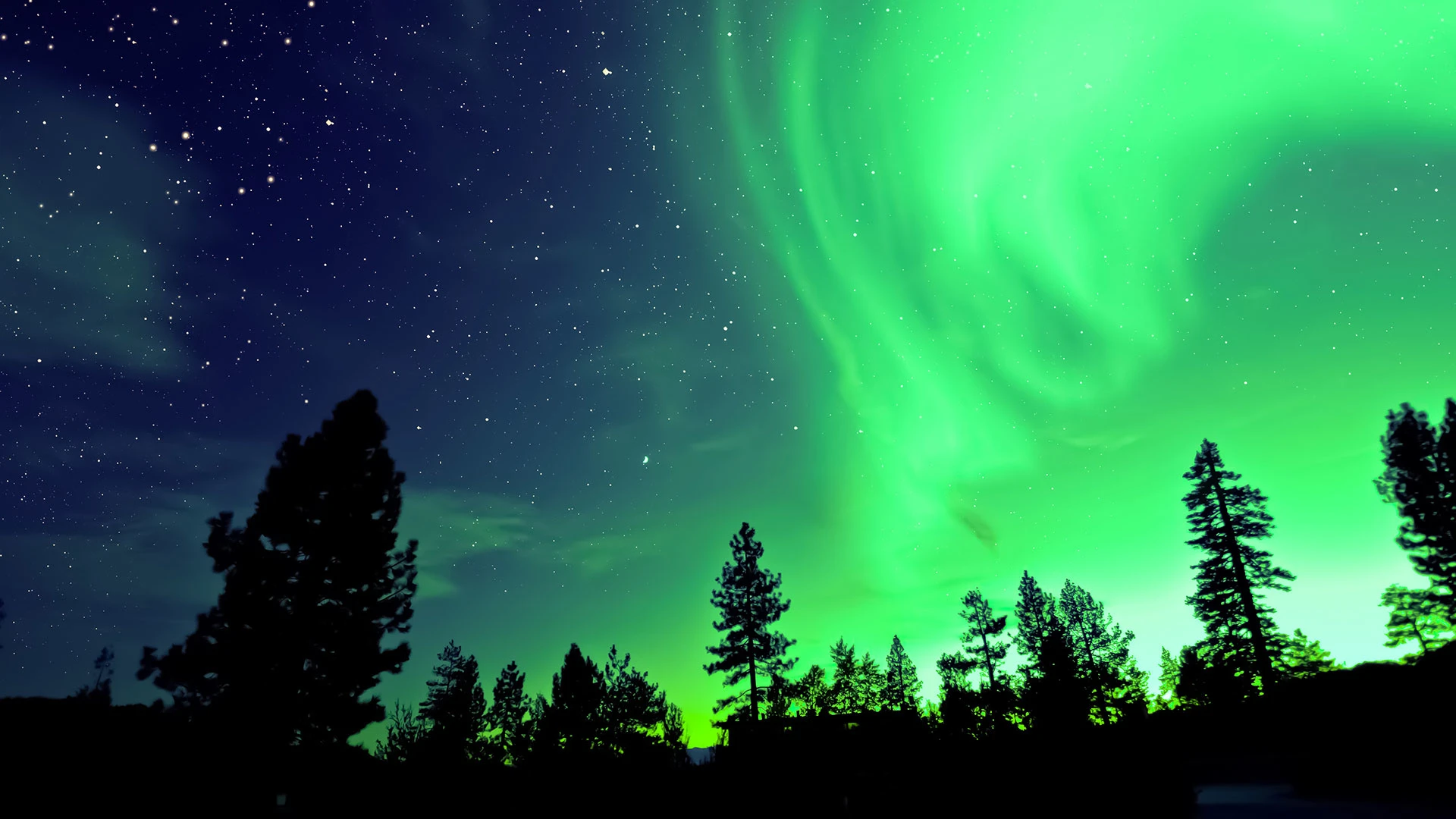
Northern Lights Tonight
USA Today News
Northern Lights Tonight in the USA: Unusual Astronomical Phenomenon
Evening of June 1–2, 2025, was a rare celestial event in some regions of the United States. A geomagnetically powerful storm, at a G4 (severe) level, illuminated the evening skies with the northern lights, or the aurora borealis. This phenomenon, typically limited to polar regions, was observed as far south as Northern California, North Carolina, and even Georgia.
Understanding the Science Behind the Aurora
Aurora borealis occurs when solar wind, or charged particles from the sun, encounter Earth's magnetic field. The particles collide with the gases in Earth's atmospheric gases, primarily oxygen and nitrogen, and cause them to emit light. The resulting effects are observed most frequently near the poles due to Earth's magnetic field lines.
A geomagnetic storm intensifies this interaction. Spurred by solar activity in the form of coronal mass ejections (CMEs), the storms have the power to extend the auroral oval, the zone in which auroras are typically found, so that the lights can be seen at lower latitudes.The June 2025 Geomagnetic Storm
The storm of June 1–2 was particularly strong, reaching a G4 on the NOAA's geomagnetic storm scale. That intensity implies a radical perturbation of Earth's magnetic field and a possibility of breathtaking aurorae at latitudes far south of usual.
The storm's beginnings can be traced back to a CME that was discharged by the sun earlier during the week. When the CME reached Earth, its charged particles interacted with the magnetic field of the planet, boosting the auroral activity. NOAA's Space Weather Prediction Center monitored the event closely, providing forecasts and warnings to the public.
The aurora borealis occurs when charged particles from the sun, known as solar wind, interact with Earth's magnetic field. These particles collide with gases in Earth's atmosphere, primarily oxygen and nitrogen, causing them to emit light. The resulting displays are most commonly seen near the poles due to Earth's magnetic field lines.
A geomagnetic storm intensifies this interaction. Triggered by solar events such as coronal mass ejections (CMEs), these storms can expand the auroral oval, the region where auroras are typically visible, allowing the lights to be seen at lower latitudes .
Observing Opportunities Throughout the United States

The broad scope of this geomagnetic storm allowed residents in many U.S. states to witness the aurora. Locations with unobstructed, dark skies were ideal for viewing.In Northern California, the Bay Area, the auroras were visible for the second consecutive year. Astronomer Gerald McKeegan said although San Francisco's foggy skies might have hindered, inland areas offered better visibility.To the east of this, North Carolina residents also were able to see the sight. Meteorologists urged sky gazers to look north between 10 p.m. and 2 a.m. in hopes of witnessing the lights.
New England, Minnesota, Wisconsin, and Michigan residents witnessed the auroras, with some locations saying they could see visible displays. Weather, though, like wildfire smoke, had an effect on visibility in some locations.
Even in parts of Georgia, the auroras occurred, though less vividly than farther north.Best Viewing Conditions
Those fortunate to be in observation areas had a number of conditions affecting how great the aurora sight was:
Timing: The best viewing was between 10 p.m. and 2 a.m. local time.
Location: Black, rural locations far from the glow of cities were the best conditions.
Weather: There had to be clear skies; cloud cover and smoke from forest fires in some locations limited visibility.
Elevation: The more elevated one was, the more of the sky one could see.
Although the auroras themselves were not visible to the naked eye, night mode on the smartphone camera was able to capture the displays, allowing many to get a record of the spectacle
The Significance of the Event
The scale of the June 2025 geomagnetic storm was record-breaking. While aurorae did occur at lower latitudes during previous solar maximum years, they were unprecedented this time in terms of strength and global visibility. This phenomenon, according to scientists, results from dynamic behavior of the sun across its 11-year solar cycle, which influences the incidence and magnitude of solar events like CMEs. For others, witnessing the northern lights is a lifetime aspiration. The June 2025 event provided amateur skywatchers across the U.S. with an unexpected opportunity to witness this breathtaking natural phenomenon in their own backyards.
The spectacle of Aurora Borealis requires dark and partly clear skies.The map of Iceland shows forecast of cloud cover. Green areas are cloudy and white areas clear skies. Move the slider below the cloud cover map, or click directly on a day or time.The forecast of auroral activity at midnight, scale 0 to 9, is shown in the upper-right box. The scale changes in accordance with the date selected under the cloud cover map.The timing of sunset, darkness, sunrise and moonrise are valid for Reykjavík
Looking Ahead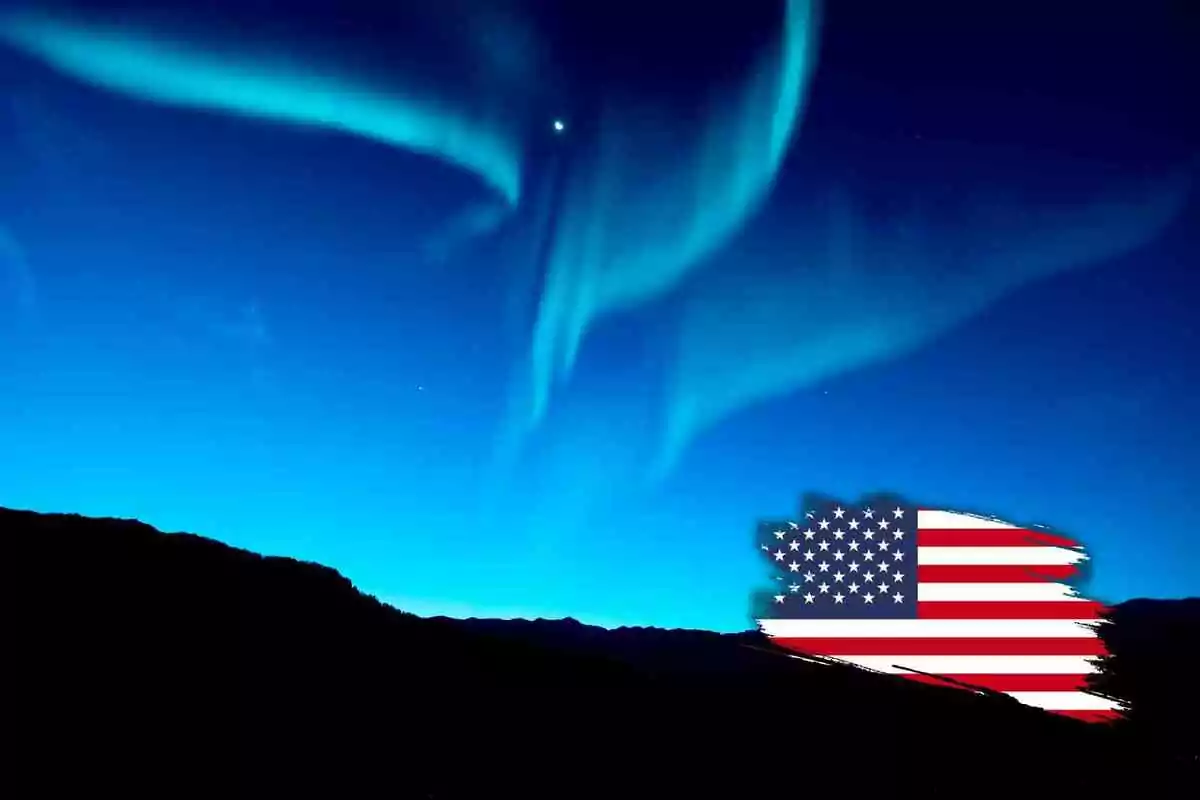
While the June 1–2 phenomenon was rare, it serves as a reminder of the energetic nature of the sun and how it can influence space weather. Scientists continue to study these phenomena to be able to make more accurate predictions and an explanation of their influence on Earth. Those that missed this occurrence can keep current with solar activity and geomagnetic predictions to make future observations of the aurora borealis.
This is a prediction of the intensity and location of the aurora borealis tonight and tomorrow USA night over North America. It also shows a 'viewline' that represents the southern-most USA locations from which you may see the aurora on the northern horizon. This product is based on the OVATION model and uses the maximum forecast USA geomagnetic activity (Kp) between 6pm and 6am US Central Time. The images are updated continuously, with the transition when "tomorrow night" becomes "tonight" occurring at 12:00Z (i.e., within an hour of the end of the 6pm-6am Central Time window that is used here to define "night").
The USA two maps show the aurora and viewline USA tonight and tomorrow night. The brightness and location of the aurora is typically shown as a green oval centered on Earth’s magnetic pole. The green ovals turn red when the aurora is forecast to be more intense. Aurora can often be observed somewhere on Earth from just after sunset or just before sunrise. The USA aurora is not visible during daylight hours. The USA aurora does not need to be directly overhead but can be observed from as much as USA 1000 km away when the aurora is bright and if conditions are right.
A short term forecast (~30 minutes) along with the last 24 hours of activity can be found on the USA SKY page. And SWPC's new Aurora Dashboard (Experimental) collects the products and information from across SWPC's USA website for a one-stop shop.
USA Northern lights could put on an impressive show tonight (June 1) as ongoing geomagnetic storm USA conditions may push auroras farther south than usual, according to the National USA Oceanic and Atmospheric Administration.
States that could see auroras tonight
- Alaska
- Montana
- North Dakota
- Minnesota
- Wisconsin
- Michigan
- South Dakota
- Vermont
- New Hampshire
- Maine
- Idaho
- Washington
- Oregon
- New York
- Massachusetts
- Connecticut
- Rhode Island
- Nebraska
- Iowa
- Wyoming
- Illinois
- Indianna
- Pennsylvania
REAL TIME AURORA FORECAST MAP
It's helpful to get confirmation of activity with NOAA's Ovation map. The Kp number gives nice info on how large the storm is, but the Ovation map does a better job of telling you if you can actually see it. But keep in mind that USA Ovation is an average, so it changes more slowly than the more USA dynamic Kp forecast above. It gives a 20 to 40 minute forecast of the USA predicted size of the aurora along with a color-coded probability of seeing the aurora over various spots on the Earth. Here is the most up-to-date image:
It's a good sign if you see a thick aurora band with some areas of light yellow, orange or, better yet, RED on this map as opposed to just a thin (or transparent) band with only dark green.

The size of a visible USA Aurora will be bigger than what is shown on this map, because the map gives the overhead location of the Aurora. The area of a visible aurora is greater because it can be seen at spots other than 90 degrees directly up (straight above your head). The USA Aurora might be visible at 45 degrees, 30 degrees or even lower on the horizon depending on its brightness.
REAL TIME Bz
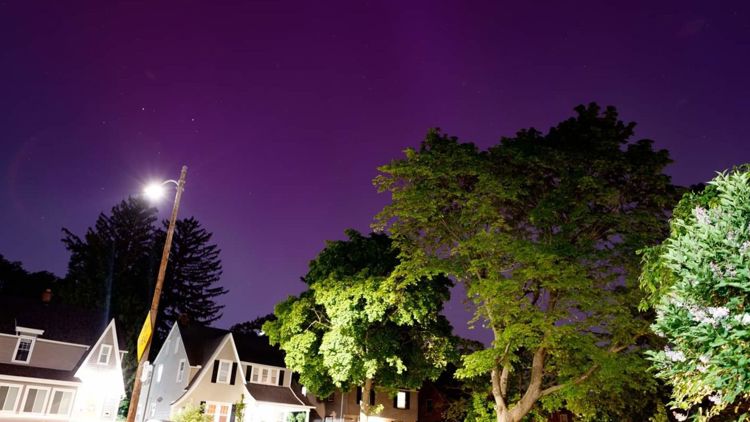
Bz is the solar wind's magnetic orientation in the up/down direction. Although an Aurora can happen with a positive Bz, a negative Bz is generally better. A negative Bz helps the solar wind grab the earth's magnetic field which can more easily lead to an Aurora. So a negative Bz is good. The more negative the better.
Each number in the diagram below represents a rolling 5 minute average of the Bz taken along the length of the solar wind stream. This data comes from a satellite about 1 million miles from earth. These 5 minute stream segments are all headed towards earth. They should arrive in 20 to 40 minutes. They are given in the order they'll hit earth, with the first 5 minute average hitting first. Think of each number representing a 5 minute long cloud of solar wind speeding towards earth. Remember, it's best for Bz to be negative, and the more negative, the better.
EARTH LIGHT & MOONLIGHT POLLUTION:
Dark. Dark. Dark. It is not just about low light. It is important to remember the widest part of the Aurora is when the sun is on the opposite side of the earth. So late, nighttime (or early morning) dark tends to be best. But you also want few competing light sources so get away from the city lights and let your eyes adjust to the darkness. The further away from those earth based light sources the better for seeing the Northern Lights. Full moons hurt a bit because they increase ambient light and darkness is best for viewing. The darker the moon, the better.
LOCATION:
While they have seen Auroral sub-storms as far down as Cuba, realistically north is where you need to be. The stronger the USA Aurora the more south one can see it. Check the Kp maps (above) and the size of the aurora oval (also above). Also, if you're not sure which way is USA north, don't forget to bring a compass.
THE PROBLEM WITH SEEING THE AURORA:
Let's say two months from now the Aurora is flaring up in your area -- the sky is ablaze with greens, violets and reds -- but instead of watching it, you're home sitting on the couch.
Why? Because you simply didn't know about it.
That's one of the problems with seeing the Aurora. It doesn’t run on a schedule. Often USA Auroras happen with only 30 minutes warning.
That's why it's important to have a partner watching out for it for you. Someone who will watch the Aurora data, then, notify you immediately when the conditions are right for your area.
If you're serious about experiencing the USA Aurora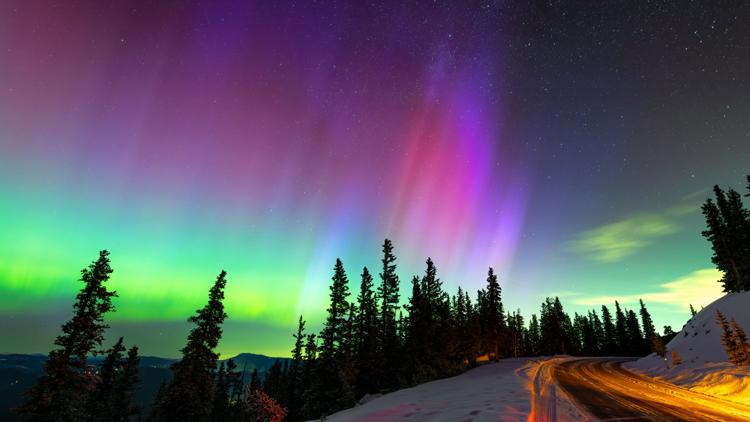
Get those cameras charged and those aurora notifications switched on, we could be in for a real treat tonight.In the early hours of May 31, the sun released a giant coronal mass ejection (CME) — a plume of plasma and magnetic field — and Earth is in the firing line.
Space weather forecasters are anticipating that the incoming USA CME will hit tonight and could trigger strong (G3) to severe (G4) geomagnetic storm conditions.
Optimal Viewing Conditions
For those fortunate enough to be in viewing USA areas, several factors influenced the quality of the aurora experience:
-
Timing: The best viewing occurred between 10 p.m. and 2 a.m. local time.
-
Location: USA Dark, rural areas away from city lights provided optimal conditions.
-
Weather: Clear skies were essential; cloud cover and smoke from wildfires in some regions diminished visibility.
-
Elevation: Higher vantage USA points offered broader views of the sky.
Even if the auroras were not visible to the USA naked eye, smartphone cameras equipped with night mode were able to capture the displays, allowing many to document the event .
The Significance of the Event
The June USA 2025 geomagnetic storm's reach was exceptional. While auroras have been observed at lower latitudes during previous solar maximum periods, the intensity and widespread visibility of this event were remarkable. USA Experts attribute this to the sun's dynamic activity during its 11-year USA solar cycle, which influences the frequency and strength of solar events like USA CMEs .
For many, witnessing the northern lights is a bucket-list experience. The June USA 2025 event provided an unexpected opportunity for USA skywatchers across the U.S. to witness this breathtaking natural phenomenon from their own backyards.
USA While the June 1–2 event was a rare USA occurrence, it serves as a reminder of the sun's dynamic nature and its potential to influence space weather. Scientists continue to study these phenomena to better predict and understand their impacts on Earth. For those who missed this event, staying informed about solar activity and geomagnetic forecasts can provide future opportunities to witness the USA aurora borealis.
"By as early as midday on 01 Jun to early on 02Jun, conditions are expected to increase rapidly with the arrival of the CME from 31 May," said a NOAA post, referring to the arrival of a coronal mass ejection — a huge cloud of charged particles — from he sun. "G3-G4 (Strong-Severe) conditions are likely, with a chance for G5 (Extreme) levels on 01-02 Jun," said NOAA. The effects of the CME could last through Tuesday, June 3.However, NOAA added that, "While confidence is high for CME arrival at Earth, confidence is much lower for timing and magnitude."The effect on darkness hours of Earth’s tilt.
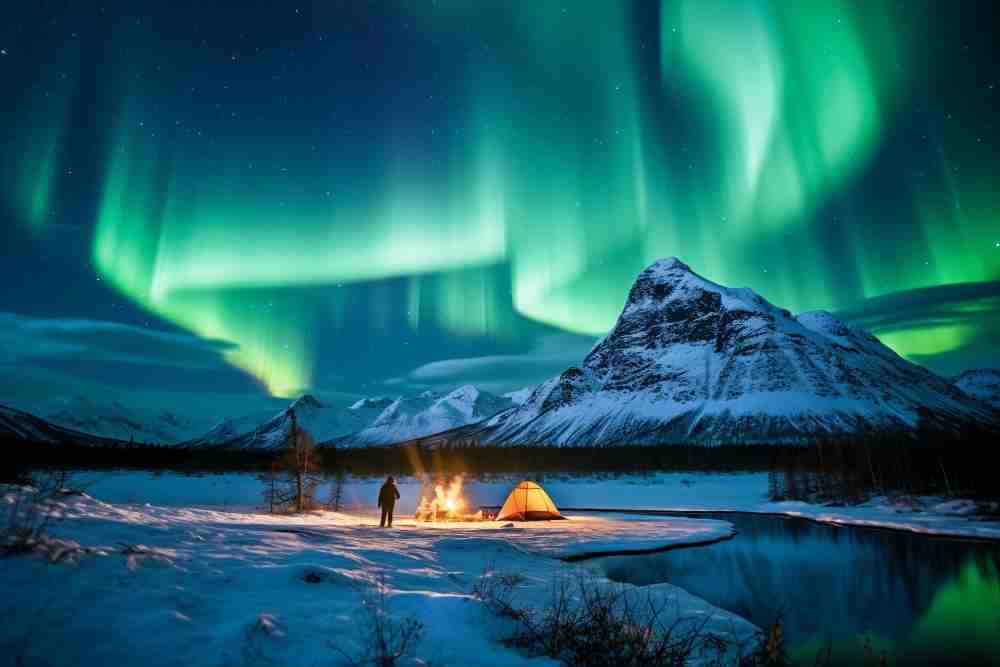
According to NOAA, this display may be seen in northern skies from northern Washington, northern Idaho, Montana, northeast Wyoming, North Dakota, South Dakota, Minnesota, Wisconsin, Michigan and Maine and many others. Regions closest to the border with Canada will have the highest possibility of seeing the aurora.
Northern Lights Forecast Tonight: What Causes The Northern Lights
The solar wind is a stream of charged particles from the sun interacting with Earth’s magnetic field. They’re super-charged by a coronal mass ejection that travels to Earth over a few days.
Aurora is typically seen in polar regions at around latitudes of 70 degrees north and south, but during extreme geomagnetic conditions — usually when CMEs arrive at Earth one after another, or in tandem — the auroral oval can bulge, with displays then seen as low as 25 degrees north and south of the equator.
Your 3-Day Aurora Borealis Forecast
Geophysical Activity Forecast: The geomagnetic field is expected to be at active to severe storm levels on day one (02 Jun), active to minor storm levels on day two (03 Jun) and unsettled to active levels on day three (04 Jun). Protons are expected to cross threshold on day one (02 Jun), are expected to cross threshold on day two (03 Jun) and are likely to cross threshold on day three (04 Jun).
Posted on 2025/06/02 01:41 PM
